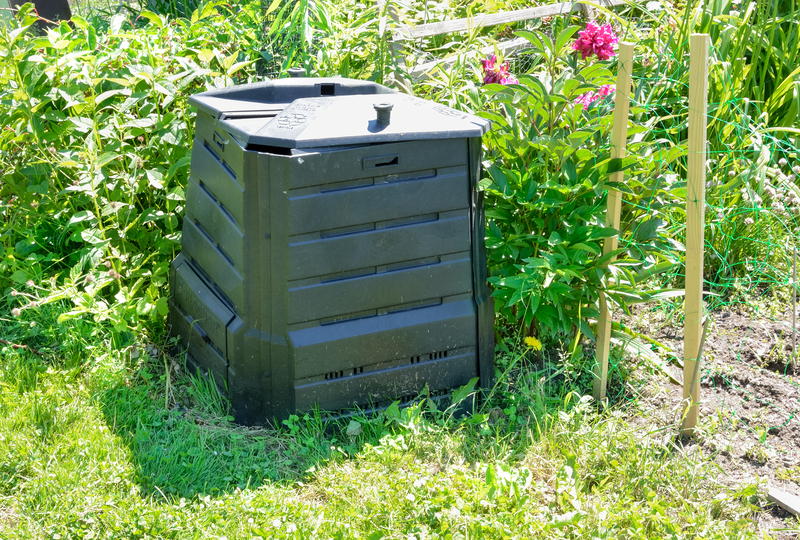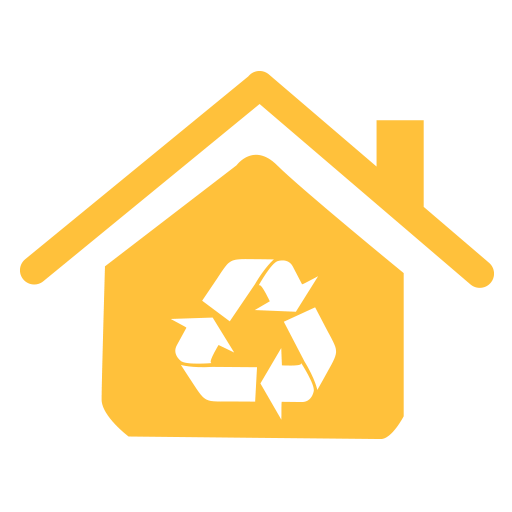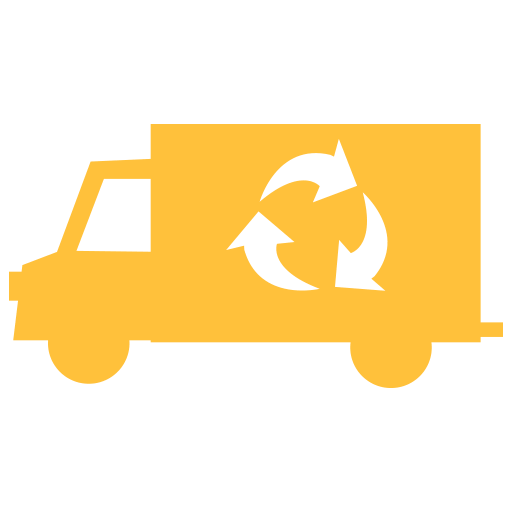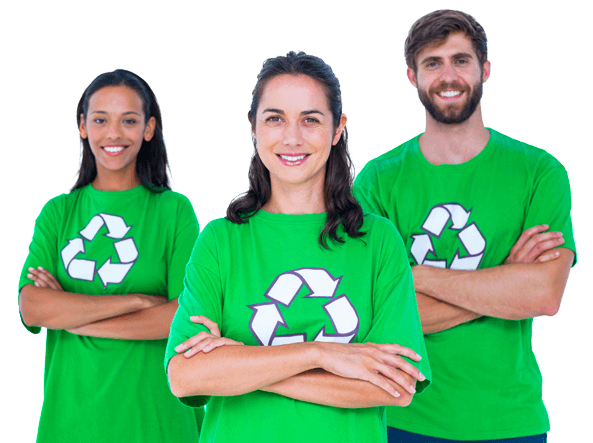What Kind of Waste is Labeled as Hazardous: Key Factors You Should Know
Posted on 03/11/2025
What Kind of Waste is Labeled as Hazardous: Key Factors You Should Know
Hazardous waste is a pressing issue for industries, governments, and local communities across the globe. Mismanagement or misunderstanding of what qualifies as hazardous waste can have grave consequences for human health and the environment. To minimize risk, it's essential to understand what kind of waste is labeled as hazardous, the key factors that determine hazardous classification, and the regulations that guide disposal and management. This comprehensive article will guide you through these aspects, helping you make informed decisions whether you're a business operator, eco-conscious individual, or simply curious about how waste is classified and managed.
What is Hazardous Waste?
Hazardous waste refers to any form of waste material that, due to its physical, chemical, or biological properties, poses a potential threat to human health or the environment. The definition covers a broad spectrum of waste products--some are generated in large amounts by industries, while others come from everyday household items. This classification matters significantly because improper handling or disposal can have far-reaching consequences.
The term "hazardous" isn't just a label; it's a legal and scientific definition, and governments worldwide, including the United States Environmental Protection Agency (EPA), provide detailed criteria for this classification.
Common Sources of Hazardous Waste
- Industrial processes (manufacturing, chemical production, metal treatment)
- Medical facilities (hospitals, clinics, laboratories)
- Household products (batteries, cleaners, paints)
- Agriculture (pesticides, fertilizers)
- Construction and demolition sites (asbestos, solvents, paints)
Each of these sources can produce waste that requires special attention and handling.

Key Factors That Label Waste as Hazardous
Determining what kind of waste is considered hazardous involves several crucial factors. International conventions and local laws may differ in some details, but most criteria overlap significantly.
1. Characteristics of Hazardous Waste
Hazardous waste is generally defined by its specific characteristics. According to the EPA and many international agencies, waste that exhibits one or more of the following four traits is considered hazardous:
- Ignitability: Waste that can easily catch fire under normal handling conditions (e.g., certain solvents, oils, gasoline).
- Corrosivity: Waste that can corrode metals or has a high or low pH, such as strong acids or bases.
- Reactivity: Waste that can explode, emit toxic gases, or react violently with water or other substances (e.g., lithium batteries, peroxides).
- Toxicity: Waste that is harmful or fatal when ingested or absorbed or leaches toxins into the environment (e.g., lead, arsenic, pesticides).
Waste possessing any of these characteristics is classified as hazardous, irrespective of its origin.
2. Listed Hazardous Wastes
Regulatory agencies maintain lists of specific wastes that are always considered hazardous, regardless of their quantity or concentration. These are called "listed wastes". Most commonly, the EPA groups these into four major categories:
- F-list: Wastes from common manufacturing operations, like solvents used in cleaning metal.
- K-list: Wastes from specific industry sectors, such as petroleum refining or pesticide manufacturing.
- P-list: Acutely hazardous, unused chemicals like certain pharma ingredients and pesticides. Even small amounts pose significant risks.
- U-list: Toxic wastes from discarded commercial chemical products.
Any waste matching the descriptions in these lists is automatically deemed hazardous, regardless of whether it shows the physical characteristics outlined above.
3. Mixtures and Derived-From Rule
Waste mixtures are another critical aspect. According to the "mixture rule" and "derived-from rule" in most regulatory systems, any non-hazardous material mixed with listed hazardous waste is treated as hazardous. Similarly, by-products or residues resulting from the treatment or handling of listed wastes are considered hazardous until proven otherwise.
4. Exceptions and Exclusions
Not every potentially hazardous material is regulated as hazardous waste. Several waste types are specifically excluded or conditionally exempt, including household hazardous waste (like certain cleaners), agricultural wastes, or mining by-products, depending on local regulations. Many of these exclusions are due to practical, economic, or political considerations, but do not change the inherent risk of the material.
Types and Examples: What Makes Waste Hazardous?
1. Chemical Hazardous Waste
- Solvents (benzene, acetone)
- Pesticides and herbicides
- Paints, lead-based products
- Pharmaceutical residues
Chemical hazardous waste is typically generated from laboratories, manufacturing, or industrial facilities. These chemicals can be toxic, carcinogenic, or persistent in the environment, requiring special disposal procedures.
2. Infectious/Biological Hazardous Waste
- Used sharps (needles, scalpels)
- Pathological waste (tissues, organs)
- Contaminated personal protective equipment (PPE)
Such waste, mostly from healthcare facilities, can transmit disease or cause health hazards if improperly handled.
3. Radioactive Waste
- Nuclear medicine and research byproducts
- Used reactor fuel
Radioactive waste is generally managed under stricter guidelines due to its long-term risk and potential for radiation exposure.
4. Electronic Waste (E-Waste)
- Old computers and monitors
- Television sets
- Cell phones
E-waste often contains dangerous substances like lead, mercury, and cadmium, qualifying it as hazardous in many jurisdictions.
5. Universal Hazardous Waste
- Batteries (lead-acid, lithium-ion)
- Mercury-containing equipment (thermometers, switches)
- Fluorescent light bulbs
Many states classify these as "universal waste," allowing for streamlined collection and recycling but still under hazardous waste protocols.
Did you know?
Even discarded aerosol cans and certain household cleaners may be regulated as hazardous due to characteristics like ignitability or toxicity!
The Health and Environmental Impact of Hazardous Waste
It's vital to understand that the danger from hazardous waste isn't hypothetical. Studies and real-world events have repeatedly shown the tragic results of mismanagement:
- Human Health Risks: Exposure can cause cancer, birth defects, acute poisoning, respiratory illness, skin burns, neurological problems, and even death.
- Environmental Degradation: Hazardous waste leaks can contaminate soil, rivers, and groundwater, threatening ecosystems and entering the food chain.
- Long-Term Persistence: Substances like PCBs, dioxins, or heavy metals can remain toxic for decades or centuries.
Proper identification is the first line of defense in preventing these outcomes.
Legal Framework and Regulatory Guidelines
The way hazardous waste is managed is primarily governed by national and international legislation. In the United States, the Resource Conservation and Recovery Act (RCRA) is the chief law, administered by the EPA, and sets standards for generating, transporting, and disposing of hazardous waste. Most other developed countries have similar laws in place.
Key aspects of legal hazardous waste management:
- Identification and labeling of hazardous waste is required at the point of generation.
- Manifest system tracks the movement of waste from creation to disposal ("cradle-to-grave").
- Strict storage, treatment, and disposal methods using certified facilities.
- Employee training and emergency preparedness are mandatory for organizations handling hazardous waste.
Failure to comply can mean heavy fines, cleanup costs, and criminal liability.
How to Identify Hazardous Waste: Practical Steps
If you operate a business, laboratory, or organization that produces waste, you must determine whether your waste is hazardous. Here is a practical, step-by-step approach:
- Determine if the waste is solid: In regulatory terms, only "solid" waste (including liquids and gases) is assessed for hazardous status.
- Check exclusion lists: See if the waste qualifies for any regulatory exclusions.
- Is it a listed waste? Compare to F-, K-, P-, and U-lists.
- Assess hazardous characteristics: Test, or use safety data, to determine ignitability, corrosivity, reactivity, and toxicity.
- Mixture and derived-from rules: Consider if the waste is mixed with or derived from other hazardous materials.
- Proper labeling and documentation: Once hazardous, label accordingly and prepare for regulated storage, transport, and disposal.
Handling and Disposal of Hazardous Waste
Since hazardous wastes are strictly regulated, disposal must adhere to stringent protocols:
- Proper Segregation: Keep hazardous wastes separate from non-hazardous types to avoid creating more dangerous mixtures.
- Certified Containment: Use approved containers to prevent leaks and accidental exposure.
- Professional Disposal Services: Work with licensed hazardous waste disposal companies for collection, transport, and ultimate disposal (e.g., incineration, deep-well injection, thermal treatment).
- Recycling When Possible: Certain hazardous components (like lead or mercury) can sometimes be recycled, reducing environmental burden.
- Follow Local Regulations: Procedures differ by region, so always follow your jurisdiction's laws and guidelines.

Frequently Asked Questions About What Waste Is Labeled as Hazardous
Is household waste considered hazardous?
Some household waste (like batteries, solvents, or cleaners) possesses hazardous properties but may be exempt from strict regulation. However, they should never be poured down the drain or discarded with regular trash. Local councils or recycling centers often offer special collections for hazardous household items.
Can hazardous waste ever become non-hazardous?
Yes. Through a process called "treatment" or "declassification," hazardous waste can sometimes be rendered non-hazardous if its dangerous properties are neutralized or removed. For instance, neutralizing an acid or using chemical stabilization.
What happens if hazardous waste is disposed of improperly?
Improper disposal can severely contaminate land and water, harm wildlife, and lead to criminal charges, heavy fines, and cleanup obligations for responsible parties. It is both an ethical and legal imperative to manage hazardous waste correctly.
Conclusion: The Vital Importance of Identifying Hazardous Waste
Understanding what kind of waste is labeled as hazardous is essential for the safety of your employees, community, and the environment. The classification relies on scientific characteristics, regulatory listings, and specific waste origins. Whether generated in vast amounts in industrial settings or in small quantities at home, any material with hazardous properties deserves vigilant handling and respect.
The proper identification, labeling, and disposal of hazardous waste protects our health, preserves our environment, and avoids severe legal consequences. Always stay updated with local and international regulations, and when in doubt, consult a hazardous waste management professional. Together, we can minimize risk and create a safer, cleaner future.
Looking for more information?
If you want to learn more about hazardous waste regulations, proper disposal techniques, or recycling options in your region, contact your local environmental agency or waste management authority.
Stay safe, stay informed, and treat hazardous waste with the seriousness it deserves.

 020 3875 4102
020 3875 4102 020 3875 4102
020 3875 4102




 House clearance
House clearance Rubbish collection
Rubbish collection





